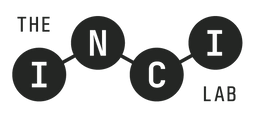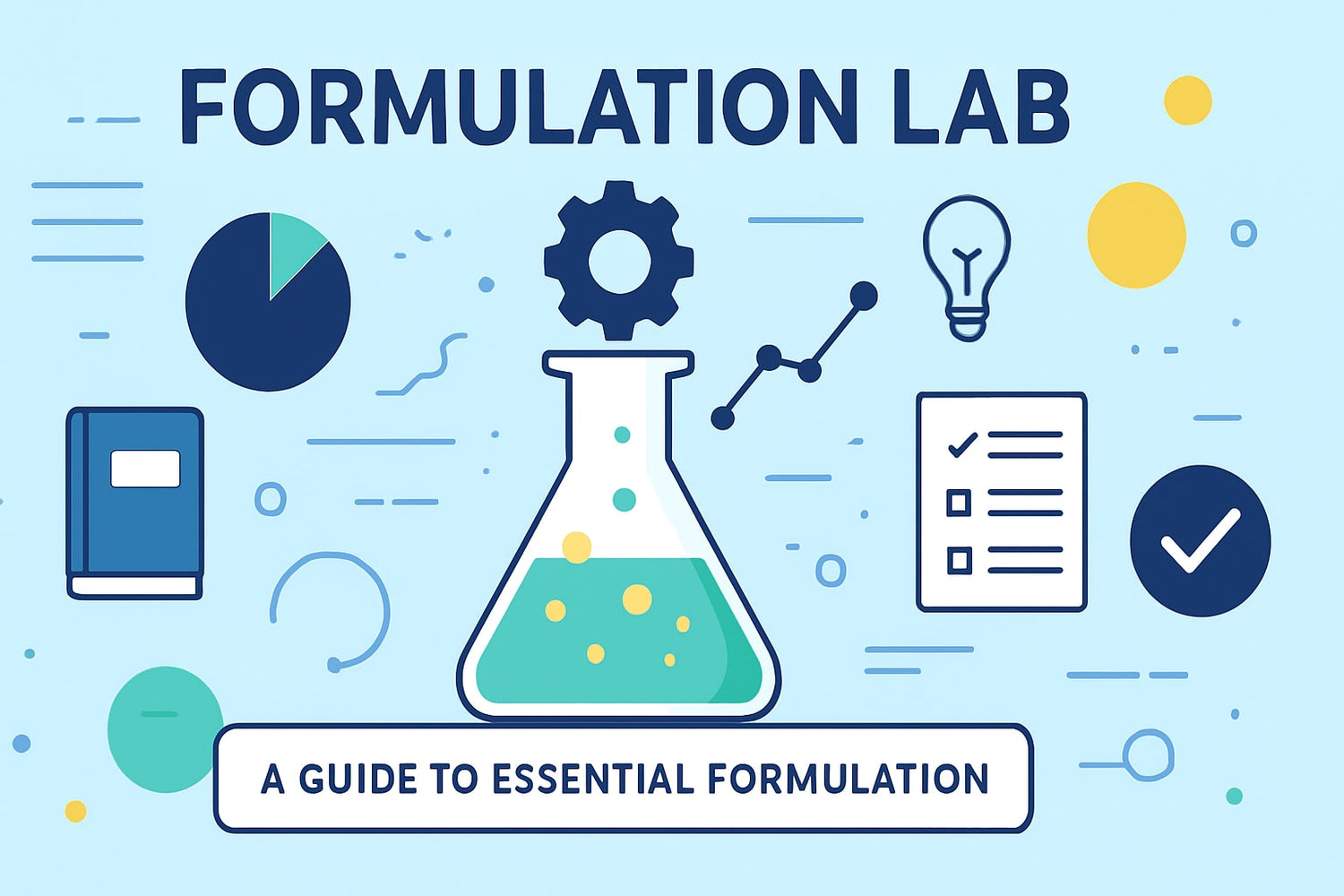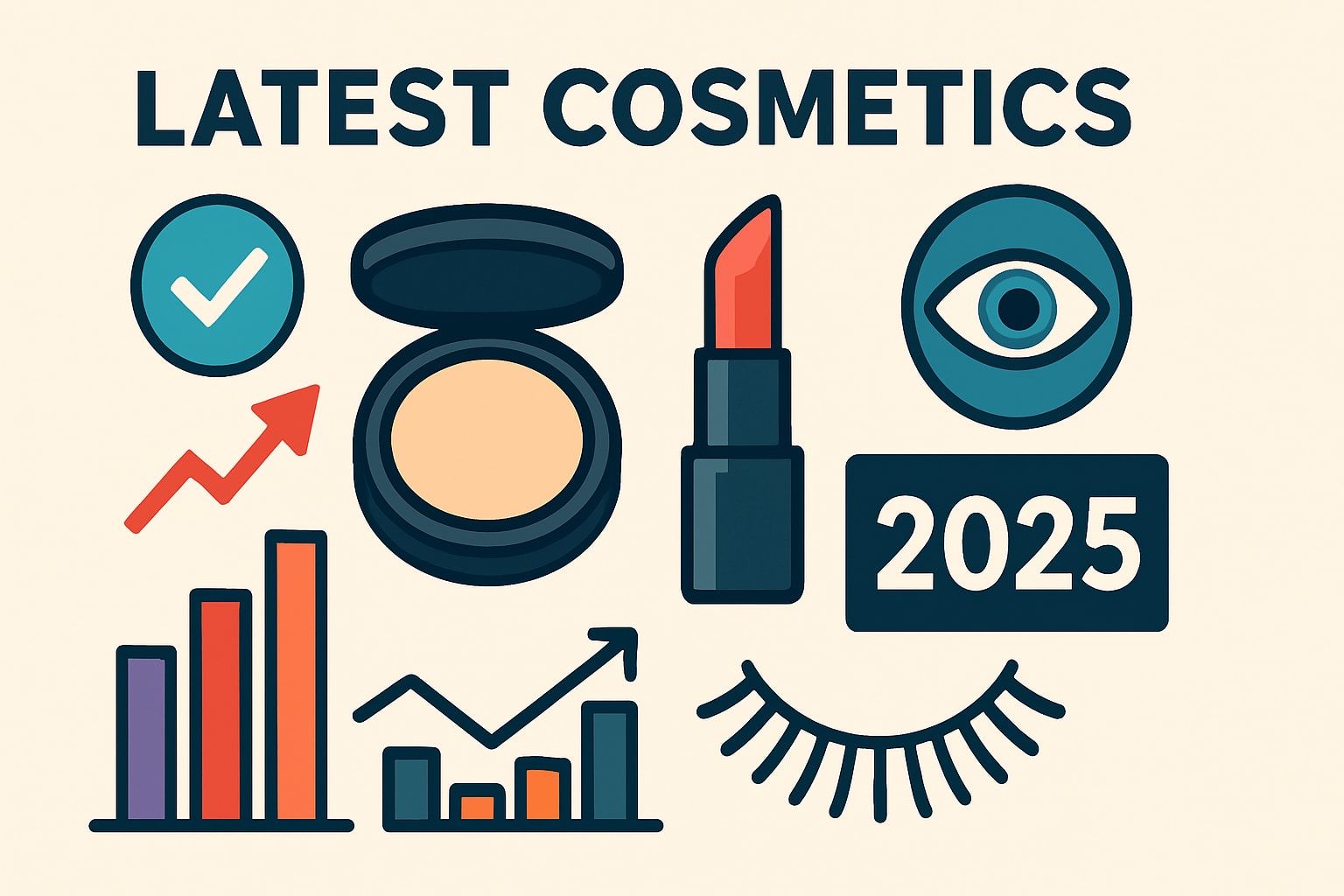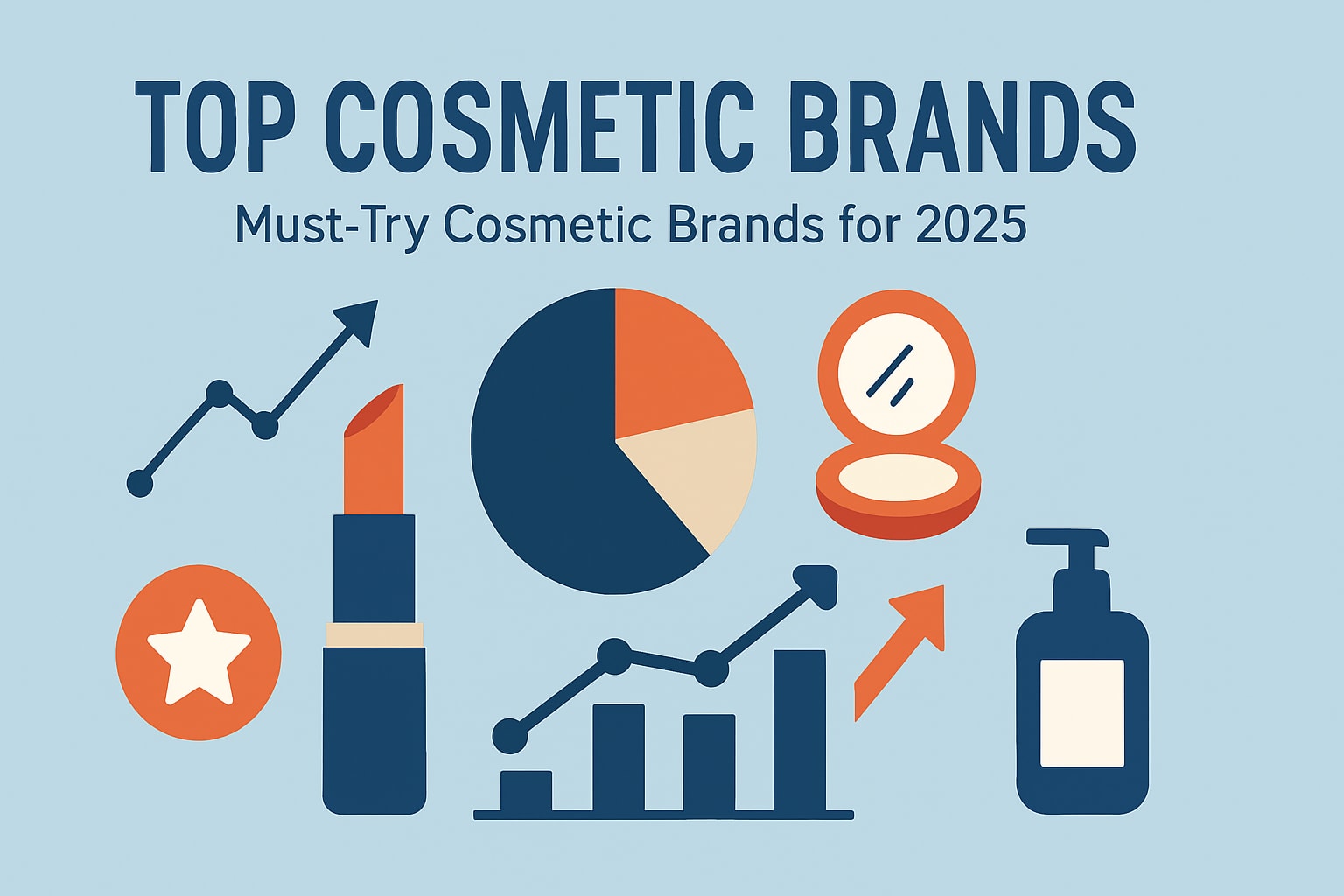In 2025, the formulation lab stands at the heart of breakthrough discoveries in cosmetics, pharmaceuticals, and personal care. As the demand for advanced, safe, and sustainable products intensifies, having a well-equipped, future-ready formulation lab is essential for brands and researchers alike.
This guide delivers actionable insights, expert strategies, and proven recommendations to help you build, optimize, and future-proof your lab. Inside, you will find practical advice on lab setup, must-have equipment, regulatory compliance, workflow efficiency, sustainability, and the latest innovations.
Whether you are launching a startup or leading a global team, read on for step-by-step guidance to achieve formulation lab excellence in 2025.
Setting Up Your Formulation Lab: Foundations for Success
Establishing a robust foundation is critical for any successful formulation lab. Whether you are launching a startup or scaling an established operation, careful planning and strategic decisions will set the stage for long-term growth. Let’s break down the essential building blocks to create a thriving formulation lab in 2025.
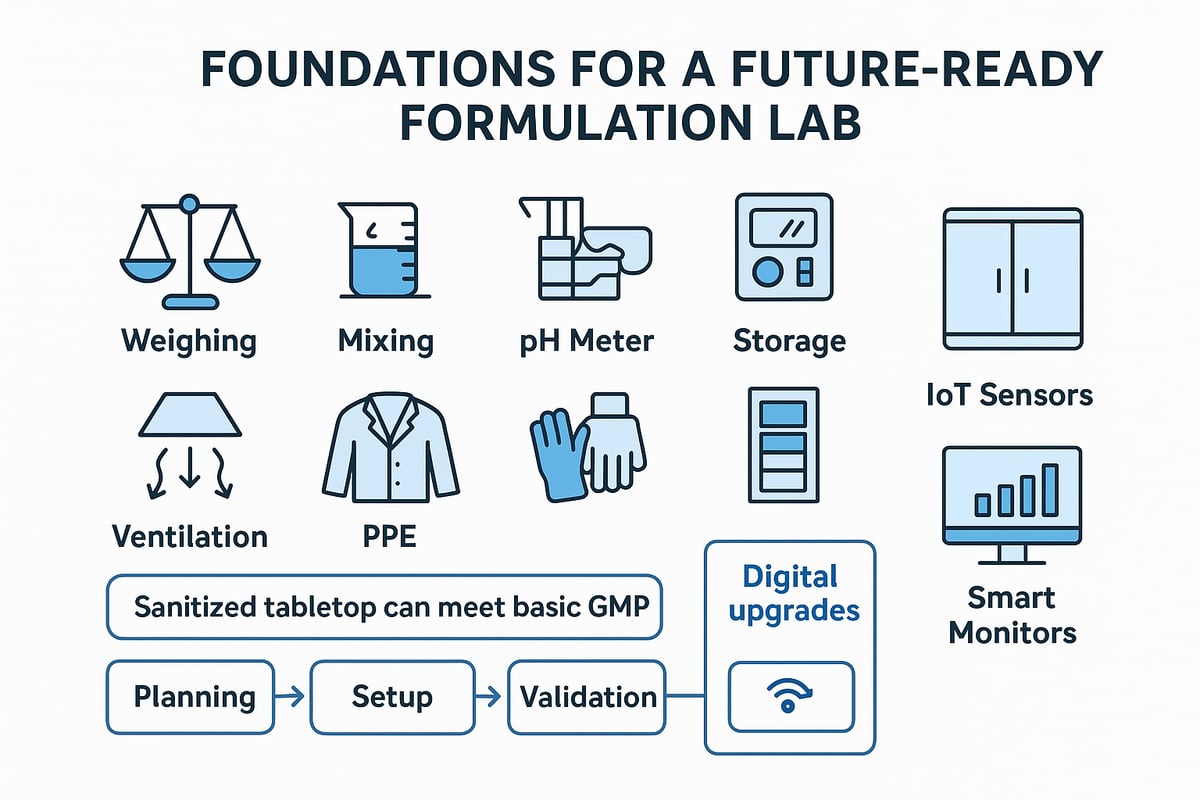
Defining Your Lab’s Purpose and Scope
Start by clarifying the primary objectives of your formulation lab. Are you focused on research and development, manufacturing, testing, or a hybrid approach? This decision shapes every aspect of your lab’s structure.
Identify the target products your lab will handle—cosmetics, pharmaceuticals, personal care, or pet care. Each category brings unique regulatory and workflow requirements. Assess the scale of your operation. Will you begin with a home-based setup, a pilot lab, or a full commercial facility?
Budgeting and resource allocation are also crucial. Set clear financial boundaries for equipment, ingredients, and staffing. Regulatory compliance is non-negotiable, so research the specific standards for your product category early on. For example, Formula Botanica often recommends starting small and scaling up as your formulation lab grows.
A strong foundation minimizes costly errors and supports future expansion. Think of this as building the blueprint for sustainable success.
Selecting the Ideal Location and Space
Choosing the right space for your formulation lab can have a major impact on productivity and compliance. Opt for a dedicated environment that is free from distractions and external contamination.
Evaluate the space required for core equipment, safe storage, and efficient workflow. Good ventilation, ample lighting, and safety features are must-haves. Check local zoning laws and legal restrictions, especially if you are considering a home or commercial lab.
Many successful formulators begin on a sanitized kitchen table before moving to a dedicated room or facility. Even a simple, sanitized tabletop can meet basic GMP standards for small-scale projects.
Create a checklist for space planning:
- Separate zones for each process step
- Proper ventilation and lighting
- Easy-to-clean surfaces
- Secure, organized storage
By considering these factors, you ensure your formulation lab is ready for both current needs and future upgrades.
Essential Equipment and Tools for 2025
Equipping your formulation lab with the right tools is vital for precision and efficiency. Core items include precision balances, mixers, heating and cooling devices, and pH meters. As technology advances, integrating smart sensors and IoT-enabled monitoring can further enhance accuracy and streamline operations.
For those just starting, cost-effective starter kits offer a solid foundation. As your formulation lab expands, professional-grade equipment and modular systems make scaling easier. Sourcing reliable, industry-standard equipment is essential to maintain quality.
A helpful resource is the Cosmetic Lab Setup Essentials guide, which outlines key equipment and setup tips for modern labs.
| Equipment Type | Starter Option | Professional Upgrade |
|---|---|---|
| Precision Balance | Basic digital scale | Analytical balance |
| Mixer | Handheld stirrer | Programmable mixer |
| pH Meter | Manual tester | Digital pH probe |
| Heating/Cooling Unit | Hot plate | Thermostatic bath |
Invest in scalable and modular equipment so your formulation lab can evolve as your ambitions grow.
Organizing for Efficiency and GMP Compliance
Organization is the backbone of any high-performing formulation lab. Design your workflow to separate zones for weighing, mixing, filling, and cleaning. This reduces cross-contamination and boosts productivity.
Implement robust storage solutions for raw materials and finished products. Digital record-keeping systems can streamline documentation and support regulatory compliance, while manual logs remain valuable for backup and audits.
Cleanliness protocols should be established and followed rigorously. Regular cleaning schedules, proper PPE usage, and labeled storage all contribute to GMP compliance. Maintaining detailed formulation records is a best practice that saves time during audits and troubleshooting.
Remember, effective organization is not just about tidiness—it is essential for efficiency and meeting regulatory standards in your formulation lab.
Mastering Good Manufacturing Practice (GMP) in Formulation Labs
In the fast-evolving world of product development, mastering Good Manufacturing Practice is essential for every formulation lab. GMP forms the backbone of product quality, safety, and consistency, ensuring that every batch meets strict standards. Whether you are launching a new skincare line or developing pharmaceuticals, understanding and applying GMP will protect your brand and build consumer trust.
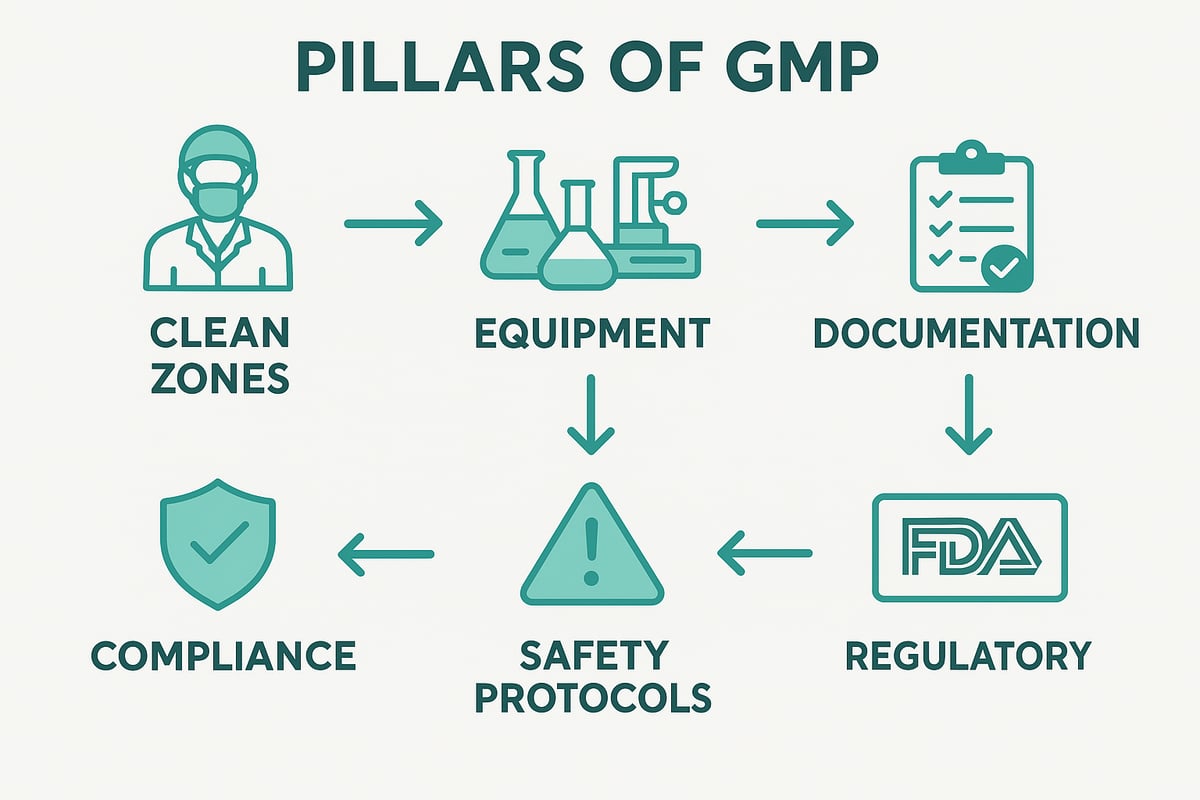
Understanding GMP: What It Is and Why It Matters
Good Manufacturing Practice, or GMP, refers to a set of principles and procedures that ensure product safety, quality, and uniformity in every formulation lab. These standards are not only legal requirements but also ethical imperatives for anyone in product development. Failing to comply can result in recalls, loss of consumer trust, and even legal action.
GMP helps formulation lab teams reduce errors, prevent contamination, and ensure traceability. Early adoption of a "formulator’s mindset," as suggested by Formula Botanica, is vital. This mindset emphasizes attention to detail and a proactive approach to quality at every stage.
Both the FDA and EU/UK have established GMP guidelines, serving as industry benchmarks. Here’s a brief comparison:
| Standard | Focus Areas | Notable Features |
|---|---|---|
| FDA | Documentation, QC, sanitation | Mandatory for US market |
| EU/UK | Traceability, safety, labeling | High emphasis on cosmetics |
Laying a solid GMP foundation in your formulation lab boosts efficiency and supports long-term growth. Every decision, from equipment selection to workflow design, should align with these principles.
Implementing GMP in Daily Lab Operations
Translating GMP theory into daily practice is where many formulation lab teams excel or struggle. The key is to embed routines that promote safety and consistency.
Daily GMP tasks include:
- Sanitizing surfaces, tools, and equipment before and after use
- Wearing appropriate personal protective equipment (PPE)
- Keeping detailed batch records, tracking every ingredient and process step
- Running regular quality control checkpoints, including sampling and validation
Templates and checklists can streamline compliance. Many labs use digital logs to reduce paperwork and minimize errors. Whether using manual or electronic systems, clear records are crucial for audits and troubleshooting.
Adopting GMP in your formulation lab is common sense, but it is also your best defense against legal issues and product failures. Consistent application ensures that every product meets your standards and regulatory expectations.
Navigating Regulatory Requirements for 2025
Regulatory landscapes continue to evolve, making it critical for every formulation lab to stay informed. Major frameworks, such as FDA rules, the EU Cosmetics Regulation, and local laws, set the baseline for compliance. Licensing, permits, and accurate product labeling are all mandatory for commercial-scale labs.
Emerging trends in 2025 include digital traceability and real-time compliance monitoring. Some countries are tightening restrictions on home-based production, so always check current laws before scaling up. Digital solutions now help labs maintain compliance, improve data integrity, and streamline audits.
To stay ahead, review the Top GMP Guidelines for 2025, which outline the latest industry best practices, data management, and supply chain considerations. Keeping your formulation lab up to date with these requirements is essential for maintaining market access and consumer trust.
Workflow Optimization: From Concept to Finished Product
Optimizing your formulation lab workflow is the foundation for bringing innovative, safe, and effective products to market. A well-structured process not only boosts efficiency but also ensures compliance and quality at every stage. Whether you are launching a new concept or refining an existing line, a streamlined workflow will help your formulation lab deliver consistent, high-performing results.
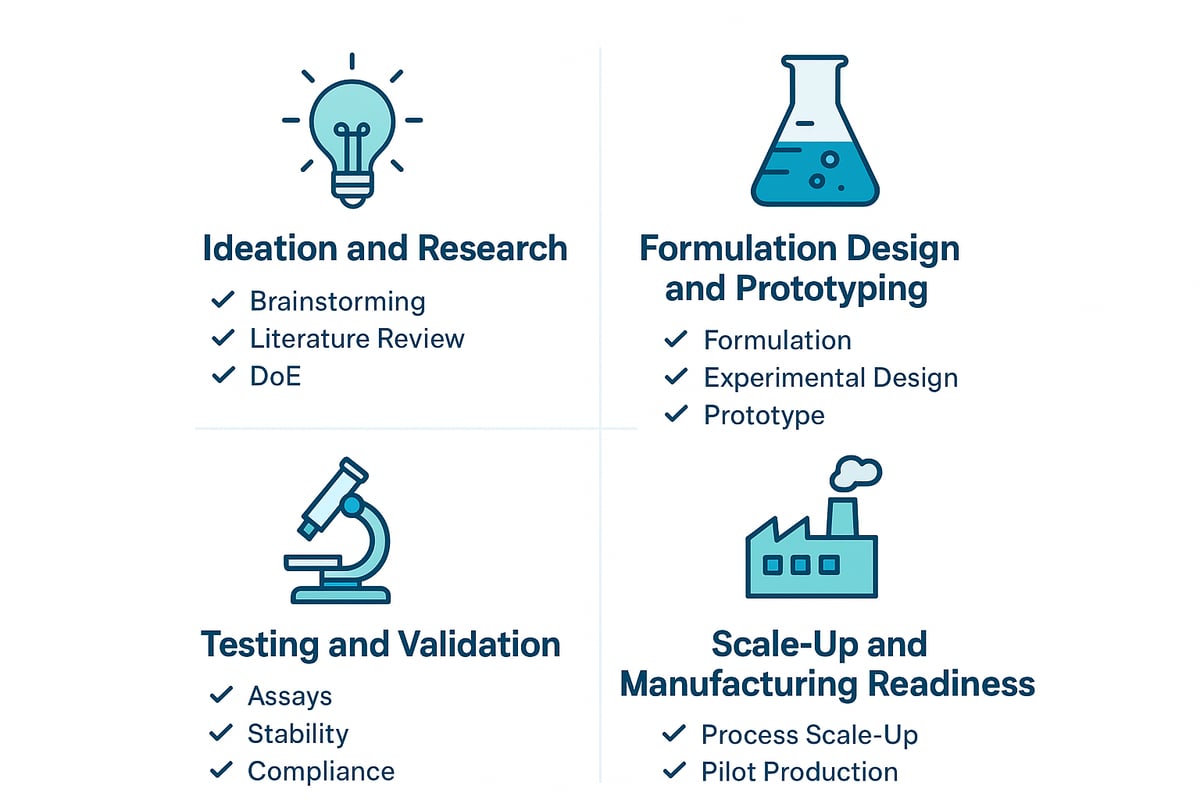
Step 1: Ideation and Research
Every successful formulation lab project begins with identifying unmet market needs and current consumer trends. Start by researching what your target audience is seeking, whether it is eco-friendly ingredients, novel textures, or enhanced efficacy.
Use global ingredient databases to investigate raw materials and their safety profiles. Benchmark competitors to understand where your formulation lab can differentiate in performance or sustainability. Engage with suppliers for the latest ingredient innovations and documentation.
Strong research lays the groundwork for your entire workflow. It helps you avoid costly reformulations down the line and positions your formulation lab to respond quickly to shifts in the market. Keeping meticulous notes at this stage will also make regulatory compliance smoother as your project advances.
Step 2: Formulation Design and Prototyping
Once you have gathered insights, the next step is designing and prototyping your formula. In the formulation lab, balance efficacy, stability, and sensorial qualities to meet both regulatory requirements and consumer expectations.
Start with small batch prototypes to test and refine your ideas. Leverage digital formulation tools and statistical design-of-experiment (DOE) software for precise ingredient optimization. These digital advances allow your formulation lab to iterate quickly and minimize waste.
For a detailed guide on best practices and safety during this phase, refer to resources like Steps to Formulate Safe Cosmetics. Document every adjustment to ensure traceability and reproducibility. This stage is where creativity meets science, and a systematic approach will help your formulation lab innovate with confidence.
Step 3: Testing and Validation
With prototypes in hand, shift your focus to comprehensive testing. Your formulation lab should conduct physical, chemical, and microbiological stability tests to ensure the product performs as intended over its shelf life.
Include sensory evaluations for texture, fragrance, and appearance, as well as accelerated aging studies to predict long-term stability. Use both digital and manual logs to record results and track patterns.
| Documentation Method | Pros | Cons |
|---|---|---|
| Digital | Searchable, secure, fast | Initial setup needed |
| Manual | Simple, low-tech | Prone to errors |
Thorough validation gives your formulation lab the data needed for regulatory submissions and helps build consumer trust. Continuous improvement at this stage reduces the risk of recalls and supports product claims.
Step 4: Scale-Up and Manufacturing Readiness
The final stage is transitioning from laboratory batches to pilot or commercial production. Plan for equipment upgrades and process standardization early to ensure your formulation lab can handle increased volumes without sacrificing quality.
Establish robust documentation and technology transfer protocols. This ensures that all critical knowledge is shared with manufacturing partners and that the process remains consistent.
Early planning for scale-up prevents costly delays and supports a smooth market launch. By embedding workflow optimization into every phase, your formulation lab can adapt quickly to new challenges and maintain a competitive edge.
Sustainability and Eco-Friendly Practices in the Modern Lab
Building a sustainable formulation lab is now a business imperative. As global demand for eco-friendly products surges, labs must evolve to prioritize ethical sourcing, waste reduction, green chemistry, and credible certifications. These practices not only reduce environmental impact but also enhance your brand’s value and future readiness.
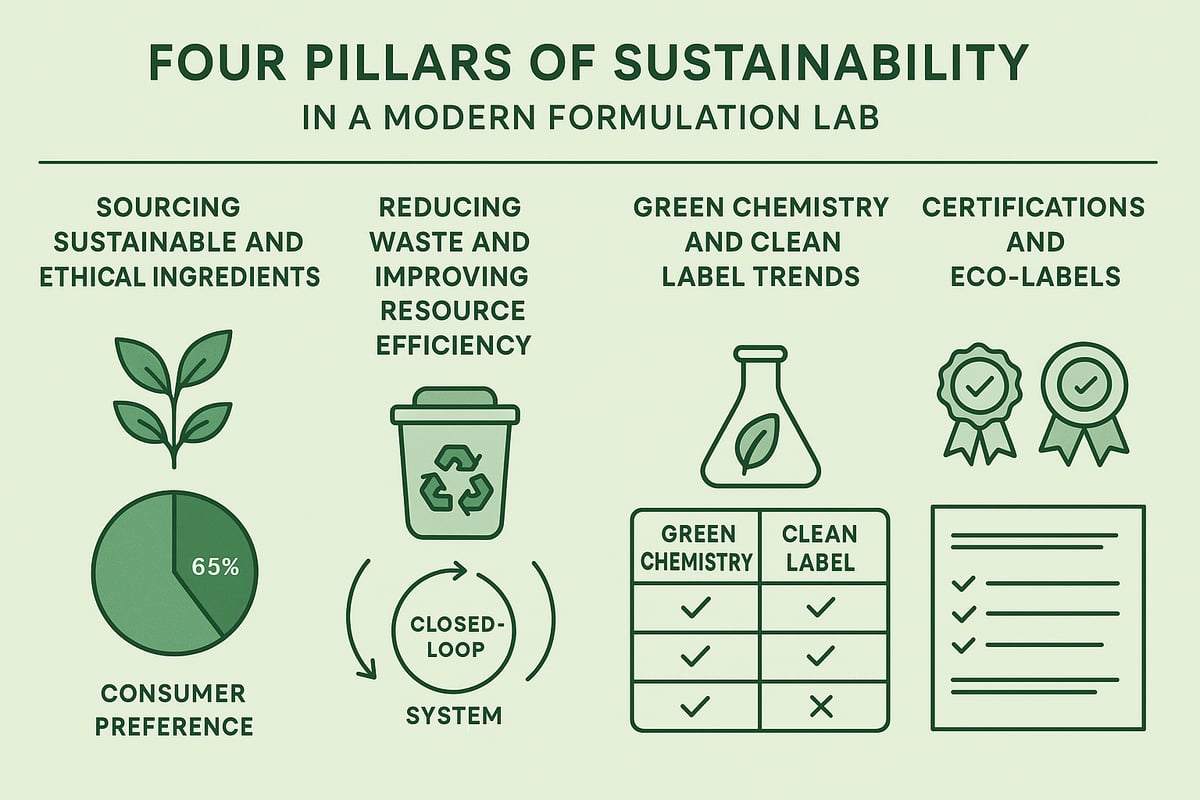
Sourcing Sustainable and Ethical Ingredients
Choosing the right ingredients is foundational for any formulation lab aiming for sustainability. Focus on natural, renewable, and ethically sourced raw materials. Work with suppliers who offer transparency and commit to fair trade practices. The demand for plant-based actives and biodegradable ingredients is rising steadily, reflecting consumer values.
A practical approach is to audit your ingredient list, replacing synthetic or non-renewable options with eco-friendly alternatives. For a curated selection of sustainable and ethical ingredients, refer to the Sustainable Ingredient Sourcing Guide. This resource helps formulation lab teams align sourcing choices with environmental goals.
Consumer preference for eco-friendly products has grown year-over-year, making these decisions critical for long-term success.
Reducing Waste and Improving Resource Efficiency
Minimizing waste is a core principle for every formulation lab. Implement strategies to reduce chemical and packaging waste, such as precise inventory management and using recyclable materials. Establish recycling and upcycling programs for containers and by-products.
Resource efficiency also means conserving water and energy. Many labs now integrate closed-loop systems that recycle solvents and water, significantly lowering resource consumption. These operational shifts not only cut costs but also appeal to eco-conscious consumers, enhancing your lab’s reputation.
Sustainable practices, when embedded into daily routines, create lasting value for both the environment and your business.
Green Chemistry and Clean Label Trends
Adopting green chemistry principles is transforming the formulation lab landscape. Focus on using safer chemicals, renewable feedstocks, and processes that minimize environmental impact. Avoid controversial or banned substances to ensure compliance and consumer trust.
Clean label product development is another growing trend. Consumers expect transparency in ingredient lists and prefer formulations with fewer, naturally derived components. Many labs are shifting toward preservative-free or naturally preserved products, responding to market demands.
Green credentials are powerful differentiators in 2025, giving your formulation lab a competitive edge.
Certifications and Eco-Labels
Certifications validate your commitment to sustainability. Popular eco-labels like COSMOS, ECOCERT, and Leaping Bunny provide clear standards for ingredient sourcing, manufacturing, and animal welfare. The certification process typically involves a thorough audit of your formulation lab and ongoing compliance checks.
Achieving these labels can boost your product’s marketability and increase consumer trust. Brands that showcase certifications often command premium price points, as buyers recognize the added value and assurance.
Leveraging certifications is both a strategic and ethical move for any modern formulation lab.
Cutting-Edge Technologies and Innovations Shaping Formulation Labs
In 2025, the formulation lab stands at the crossroads of science and technology, embracing rapid advancements to stay competitive and compliant. Labs are transforming how products are developed, tested, and manufactured, leveraging digital tools, automation, and sustainable processes. Let us explore the essential innovations shaping the future of your formulation lab and how these changes can empower your team.
Digital Transformation: Automation, AI, and IoT
Digital transformation is revolutionizing the formulation lab, driving efficiency and accuracy. Labs now deploy automation systems for repetitive tasks, freeing up scientists for creative problem-solving. AI-powered formulation design tools predict ingredient interactions and streamline product development, cutting costs and reducing errors.
Internet of Things (IoT) technology brings real-time monitoring to the forefront. Smart sensors track temperature, humidity, and equipment status, alerting staff to deviations before they impact quality. These innovations help labs achieve up to 30 percent faster product development cycles, giving them an edge in a crowded market.
As technology evolves, labs must also consider the benefits of reformulating products, ensuring formulations remain both innovative and compliant with shifting consumer demands. Integrating digital solutions into your formulation lab sets a strong foundation for future growth.
Advanced Analytical and Characterization Tools
Analytical advancements are empowering the formulation lab to deliver products with superior performance and consistency. High-throughput screening accelerates ingredient testing, while mass spectrometry and particle analysis offer precise characterization of raw materials and finished goods.
Biophysical tools, such as advanced imaging and spectroscopy, enable researchers to monitor molecular stability, ensuring that active ingredients retain their efficacy. Data-driven insights from these tools inform every stage of formulation, from ideation to scale-up.
Labs that invest in these technologies can quickly identify and solve problems, reduce waste, and meet regulatory standards more easily. As a result, the formulation lab becomes a hub of innovation and quality assurance, supporting faster time-to-market for new products.
Sustainable Manufacturing Technologies
Sustainability is now a core mandate for every formulation lab. Energy-efficient equipment, low-emission processes, and green solvents are becoming standard. Labs are adopting closed-loop systems to recycle water and solvents, minimizing environmental impact and reducing operational costs.
Innovations like 3D printing and microfluidics allow for rapid prototyping, slashing both material use and development time. Continuous manufacturing technologies further cut waste, supporting eco-friendly production at scale.
By prioritizing sustainable practices, your formulation lab can meet consumer expectations for transparent, responsible products. These changes also position your business for regulatory incentives and long-term resilience in a changing marketplace.
Future Trends: What’s Next for Formulation Labs?
Looking ahead, the formulation lab will embrace even more personalized and on-demand manufacturing models. Biotechnology and synthetic biology are opening doors to novel ingredients and tailored solutions. Regulatory technology, including blockchain, is enhancing ingredient traceability and real-time compliance reporting.
Staying informed about future trends in GMP auditing ensures your lab remains compliant as data integrity and advanced tech become central to quality assurance. Labs that anticipate and integrate these trends will enjoy greater agility and market relevance.
By investing in continuous learning and strategic technology adoption, your formulation lab is prepared to lead the industry into the next era of innovation.
Case Studies and Real-World Examples: Lessons from Leading Labs
Real-world stories offer invaluable lessons for anyone building or optimizing a formulation lab. From home-based startups to data-driven biotechs, these examples highlight what it takes to achieve success, overcome challenges, and stay ahead in 2025.
Home-Based Formulation Labs: Scaling from Hobby to Business
Many innovators begin their formulation lab journey at home, often on a kitchen table or in a spare room. The key is starting small, focusing on organization, and investing in essential tools. As the business grows, expanding to a dedicated space becomes crucial.
Key challenges include managing a limited budget, upgrading equipment, and understanding regulatory requirements. Success comes from meticulous record-keeping and a willingness to learn continuously. Formula Botanica tutors, for example, have transformed hobbies into thriving businesses by building strong foundations and adapting as needs evolve.
A well-organized formulation lab can scale efficiently, allowing for smooth transitions from home setups to larger commercial operations. Adaptability and attention to detail are critical for this growth. With the right approach, even a modest formulation lab can become a launchpad for lasting success.
Pharmaceutical and Biotech Labs: Data-Driven Excellence
Pharmaceutical and biotech organizations operate formulation labs at the highest standards. KBI Biopharma exemplifies this approach, combining advanced stability analysis with statistical design-of-experiment (DOE) methodologies. Their labs have supported over 80 successful development programs, demonstrating the value of rigorous, data-driven processes.
These labs leverage forced degradation studies and biophysical characterization tools to deliver optimized formulations. The ability to transfer technology seamlessly to fill or finish contract manufacturers ensures clinical and commercial milestones are met.
By prioritizing data integrity and process optimization, a pharmaceutical formulation lab can maintain regulatory confidence and product quality. The lessons from these leading labs underline the importance of robust analytics and documentation for industry success.
Navigating Regulatory and Market Challenges
Regulatory demands are constantly evolving, making compliance a top priority for any formulation lab. Labs must stay abreast of FDA, EU, and local requirements, especially when scaling from small-batch to commercial production. Licensing, product labeling, and accurate claims all demand meticulous attention.
One effective strategy is proactive compliance, which includes ongoing training and digital documentation. Labs that embrace digital traceability and real-time monitoring achieve faster regulatory approval and smoother market entry. For a deeper dive into the complexities shaping 2025, see the GMP Compliance Challenges in 2025 article.
Labs with strong compliance records not only avoid costly setbacks but also build consumer trust. In a competitive market, regulatory readiness is a defining factor in a successful formulation lab.
Innovation in Sustainability: Eco-Conscious Lab Operations
Sustainability is reshaping every formulation lab, from ingredient sourcing to waste reduction. Labs are adopting green chemistry, integrating recycling programs, and seeking certifications like COSMOS and ECOCERT. These efforts lower costs, enhance brand reputation, and often unlock regulatory incentives.
Many labs now track resource consumption, implement closed-loop systems, and prioritize renewable materials. The shift toward eco-friendly practices aligns with rising consumer demand for responsible products.
Achieving sustainability in a formulation lab is both an ethical and business imperative. By embedding green operations into daily routines, labs position themselves as leaders in the evolving market landscape.
As you’ve explored the essential foundations, innovative technologies, and sustainable practices shaping formulation labs in 2025, you’re now better equipped to bring your product ideas to life—whether you’re refining your own brand or expanding an established line. At The INCI Lab, we know that every successful journey starts with expert guidance and a clear vision. If you’re ready to take the next step and turn your concepts into high-performance, eco-friendly products that stand out in a competitive market, let’s get started together. Start Your Product Journey
